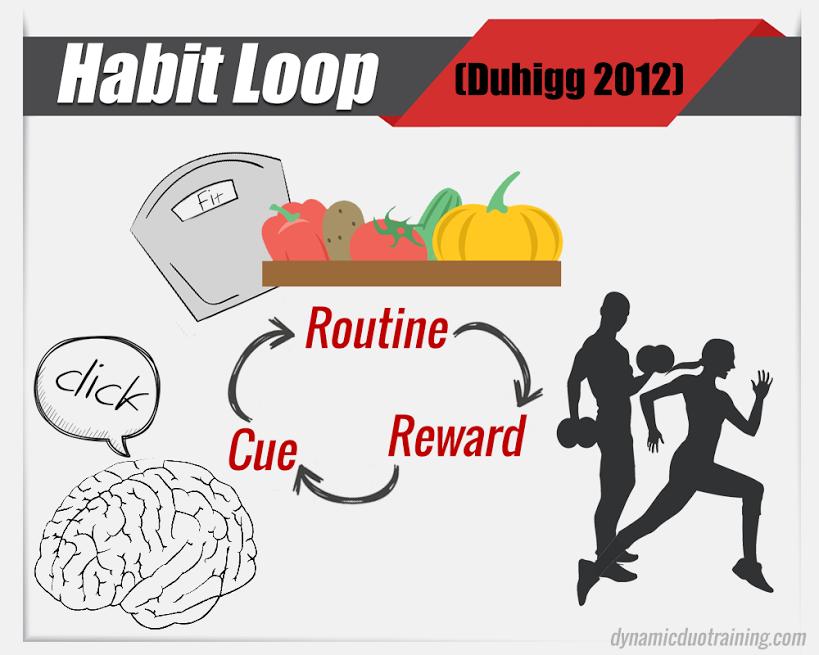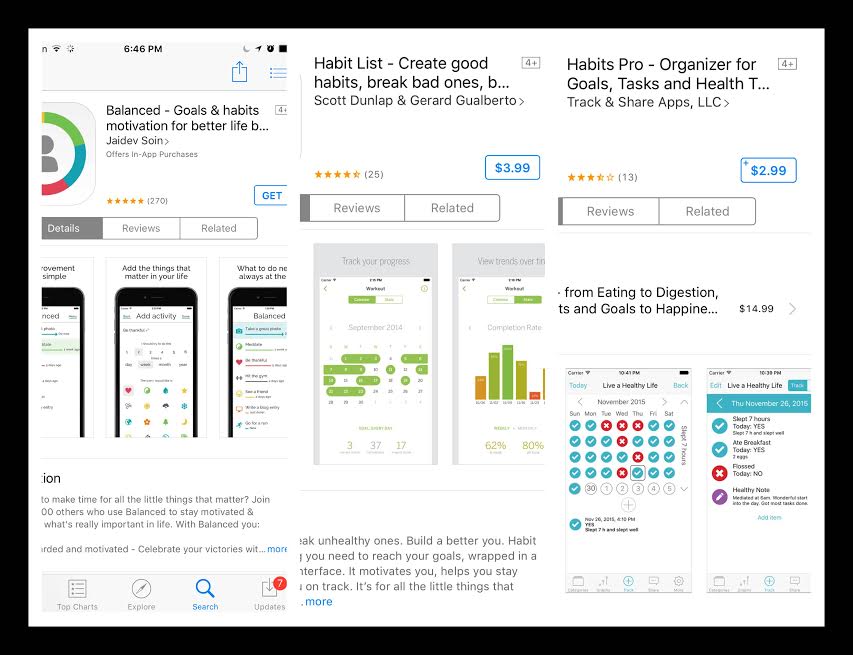We have a confession to make…when we first started our fitness journey all we wanted was the end result and that was to have chiseled abs, a super hero-comic book looking muscular chest, a back bigger than the state of Texas, and of course the massive guns (arms) for the ladies.
We never thought about building good behavioral habits, laying down the bricks for a strong foundation, creating systems, gaining knowledge for longevity within fitness, and most importantly enjoying the actual process, not just the product.
You see, getting your dream physique is just an end result from a good exercise and nutrition program.
But without building good behavioral habits and laying down the bricks for a strong foundation… then there is no system created for a long term and sustainable fitness journey.
Let’s dive into how to build good behavioral habits.
The Habit Loop
To form a habit there are 3 steps (1):
Step 1: There is a CUE, a trigger that tells your brain to go into automatic mode and which habit to use
Step 2: Then there is a ROUTINE, which can be physical, mental, or emotional
Step 3: Finally, there is a REWARD, which helps your brain figure out if this particular loop is worth remembering for the future

Over time, this habit loop- Cue, routine, and reward becomes more automatic. The cue and the reward becomes intertwined until a powerful sense of anticipation and craving emerges.
Now if we take exercise and nutrition as an example, the reason its so hard to build good habits is because once you develop a routine of sitting on the couch rather than exercising or grabbing donuts at your leisure instead of having a healthy-balanced meal, those patterns always remain in your heads.
But if you were to program your brain and teach it new neurological routines that overpower those poor behavioral habits (droughts and sitting on the couch) and apply the habit loop…you can force those bad tendencies into the back burner and create new ones.
For example, with exercise:
Step 1: The Cue- Your tired of seeing your body image in the mirror every day when you shower, but your too tired to work out after a long day of work
Step 2: The Routine- You start bringing your exercise clothes to work with you and go straight to the gym instead of coming home and getting relaxed
Step 3: The Reward: You consistently start attending the gym and exercising for 2-3 months, your body starts changing, and you start to like what you see in the mirror
For example, with Nutrition:
Step 1: The Cue- Your tired of feeling and looking like crap from all the eating out, snacking, and junk foods your consuming but you have no desire to grocery shop or cook
Step 2: The Routine- You start by hiring a chef that comes to your house once per week, does all your grocery shopping, and cooks you healthy and delicious meals or perhaps you go the meal prep service route and have healthy-delicious foods delivered to your home
Step 3: The Reward: You start to have more energy day to day, you feel better at work, you work harder, and your even inspired to start exercising
Always remember…Starting off with good habits is everything and builds a solid foundation to have success within your fitness journey.
Cue and Reward Yourself From Now on
In 2002 researchers at New Mexico State University wanted to understand why people habitually exercise (2). 266 subjects were studies who performed at least 3 days per week of exercise. What they found was that many of them had started running or lifting weights almost on a whim, or because they suddenly had free time or wanted to deal with unexpected stresses in their lives.
However, the reason they continued and why it became a habit was because of a specific reward they started to crave.
In one group, 92 percent of people said they habitually exercised because it made them feel good. In the other group, 67 percent of people said that exercising gave them a sense of accomplishment.
If you put this into a real-life example, say you want to work out every morning for 30 minutes, it’s essential that you choose a simple cue like leaving your gym clothes out so right when you wake up the clothes laid out triggers your brain to get ready and workout. Then once you have your simple cue, set a reward for yourself, such as eating something nontraditional like a piece of chocolate or a small treat just to get your sense of accomplishment.
Some other forms of rewards you can do are:
A) Try picking a habit you want to start, like removing processed foods, then rate yourself on a scale from 1-5 (1 being “a poor job” and 5 being “an amazing job”) at the end of the week. If you got a 4 or 5 then reward yourself, if you got a 1 or 2 then try the habit over again next week, and if you got a 3, then that’s a decision you have to make upon yourself and if you should be rewarded or not. What this would look like is us removing 2-3 processed food items in one week, if we are successful with it for a week straight, we rate ourselves a 5 and then have a small indulgence meal as a reward and then move onto a new habit
B) There are apps now where you can give yourself points or stars after each task that you performed. Simply use a new habit as a task, experiment with it for a week and then rate yourself daily or weekly with the app and depending on the total points or stars you get in a week or month, reward yourself with something. Some really good apps below are:

C) In the context of exercise and nutrition, give yourself a monthly total of 20 points, you assess or someone else assesses you on a 10-point scale in these 2 categories, you don’t have to maintain a certain ranking in one category, you just have to maintain a certain total. So, let’s say it’s a 15-point total out of 20 that you need to attain for the month, so maybe you have a really good month at the gym and get all your workouts in and that gives you 10 full points for your exercise category, but your nutrition was off due to traveling or just very busy with work and you give yourself a 5 for that category, well that turns out to be a total of 15 points! Now you need to reward yourself. So, this is a very simple and non-technical way of creating good habits and something you can play around with
Just remember the habit loop and most importantly see what sparks the cue for you and then make sure to reward yourself some way.
Our new physical paperback book “The New Era of Fitness” is finally out! We are pretty much giving it away “FREE” and giving away a “FEW BONUSES” along with it. Get it HERE
Resources:
- The Power of Habit. Charles Duhig. 2012
- Finlay et al. predicting exercise and health behavioral intensions: attitudes, subjective norms, and other behavioral determinants. 2002


